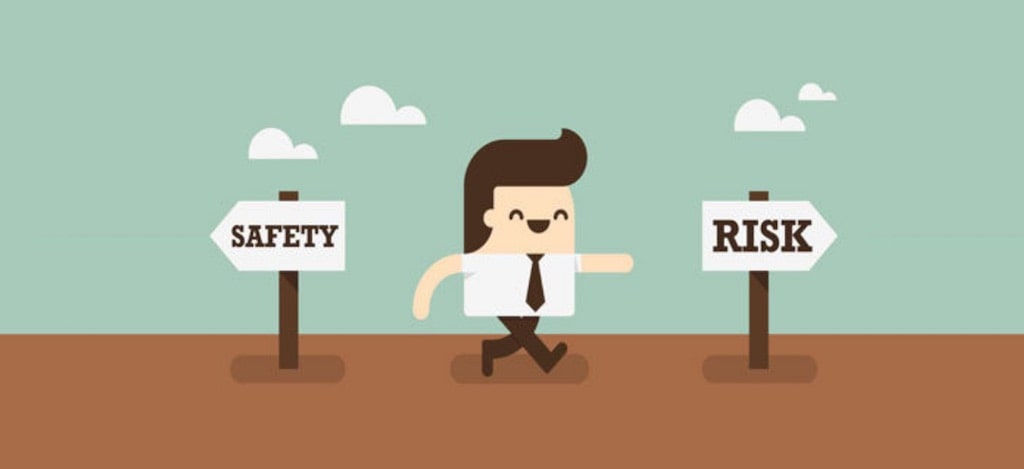
- September 08, 2021
How To Calculate Your Risk While Trading?
In finance, risk and reward are often used interchangeably, with "risk" also being referred to as the R/R ratio.
When deciding whether to place an order, first subtract the entry point of the transaction from the stop-loss sequence to get the risk/reward balance. The danger of the ratio is represented by this portion. Once you know the profit goal and the access point, calculate the gap. The incentive is "payback." To obtain the R/R ratio, split the risk by the return.
Read the best forex broker review and make calculated risk choices for trading.
What is the Risk/Reward Ratio?
To judge the revenue potential (reward) of a transaction, the risk/reward ratios are employed (risk). The profit and risk in each transaction are dependent on the trading lines established by the trader.
This stop-loss order is used to measure out risk. The spread across the entry point of the trading and the stop-loss order represents the value gap between the two. To determine whether the transaction is worth exiting, a profit goal is used. In terms of financial profit, the differential between the profit goal and the entry price represents the trade's future income.
Note: - Any stop-loss order is an option to sell an asset at a certain price after it has fallen. Doing so reduces the possible loss, as the worth of the asset plummets before you exit the transaction.
This connection indicates if the benefit is greater than the risk, or vice versa. By using this, you'll know whether or not a transaction is a smart idea.
Read the trading signals with the help of the UK forex trader to earn profits in forex.
How to Calculate the Risk/Reward Ratio?
Risk/reward ratio calculation: Find equally the risk and reward to determine the risk/reward ratio. In each of these limits, the trader sets the thresholds.
With stop-loss orders, the risk is the entire possible loss, which is defined by the stop order. It is possible to lose everything. The distinction between the entrance point for the transaction and the stop-loss order is known as the stop-loss exit point.
The incentive is the entire possible profit, which is calculated by multiplying the profit goal by the profits prospective. The sale of a security is represented by this point. Your prize is the amount you might potentially make if you complete the transaction. The profit objective is the gap between the goal and the entry point.
A risk/reward ratio is a simple formula that tells you how many times more or how many times less the payoff is compared to the risk.
The higher the ratio, the increases the likelihood associated with the transaction. This potential revenue is higher than the possible loss if the profit/loss ratio is less than one.
How does the Risk/Reward Ratio work?
It is preferable to make transactions with lower risk and return ratios solo. In other words, the possible reward far exceeds the potential danger. A modest risk/reward ratio is enough to be successful.
Trading with ratios under 1.0 is more feasible than with ratios over 1.0 with regard to risk and return. The risk-to-reward ratio among most day traders tends to be about 1:1.
When calculating risk and return, set the stop loss where it makes sense. Once you have your plan and evaluation in place, set a sensible profit goal to reflect it. Players should never choose levels at random.
To avoid losing money, you must establish your stop loss and profits target locations before you can evaluate the risk/reward of the transaction.
Follow the best forex broker for beginners to start your trading in the forex market.
Limitations of the Risk/Reward Ratio:
A low risk/reward ratio is not the whole picture. You must also be aware of the chances of achieving those objectives.
Today traders, one of the most frequent mistakes is setting a predetermined R/R ratio prior to examining a transaction. Traders may get away with setting their stop-loss and profit goals depending on the moment when they enter a trade instead of the worth of the asset.
Determining that transactions still have a fair probability of achieving the goal first before stop-loss requires careful attention to risk and profit/loss ratios.
In order to take advantage of the risk/reward ratio, you will need a trading strategy that devises a trading plan with the following:
- Economic prospects are considered favorable
- What is the best time and place to enter a trade?
- In such market circumstances, where to set your stop-loss and profit goals
You shouldn't be concerned only with the risk/reward ratio when establishing if a transaction is a worthwhile risk. A favorable risk-reward ratio is frequently employed in addition to other risk mitigation factors, such as:
- Profitability is determined by comparing the number of successful transactions to those that failed.
- Break-even ratio, which is the volume of successful transactions needed to earn back what was spent on them.
Get the best deals for your trading account from the top 10 forex trading platforms in the market.



















